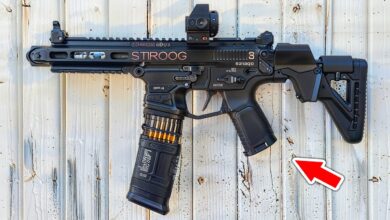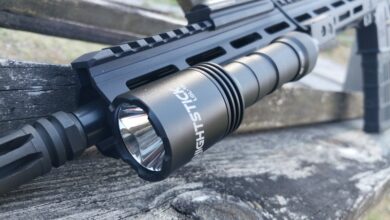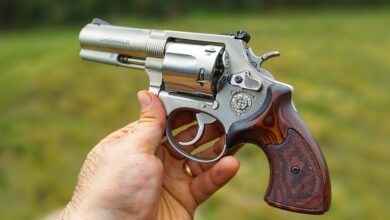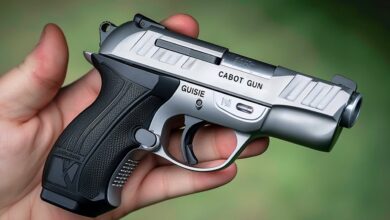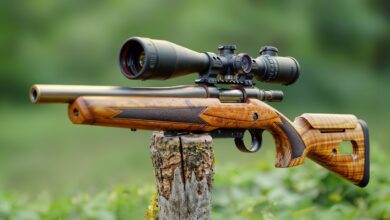Ban State Friendly: Low Key Defensive Firearms
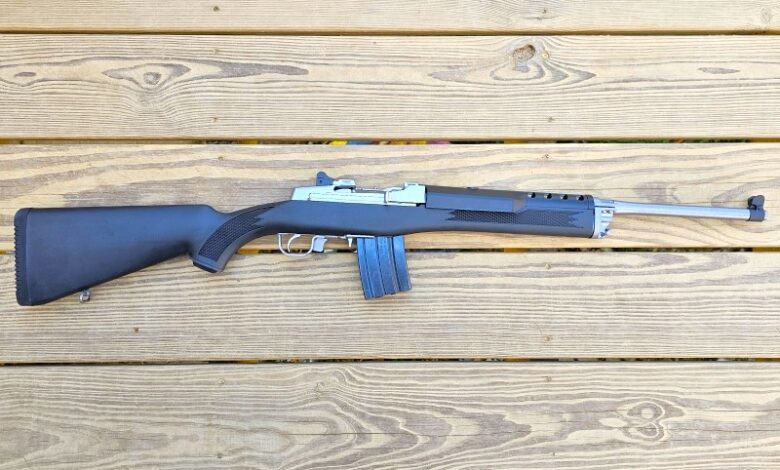
We sometimes refer to living in a state where certain firearms are banned as being “behind enemy lines.” There’s nothing like draconian firearms restrictions to spoil the fun for those who enjoy certain classes of firearms, namely, semi-automatics.
But we should also be thankful that the government is trying to protect us from ourselves by limiting certain features such as detachable magazines, flash suppressors, vertical grips, pistol grips, bayonet lugs, and other features that make firearms far more deadly. Especially those dastardly standard-capacity magazines that hold over ten rounds because 11 rounds would just be plain dangerous.
For this article, we’ll focus on those firearms that can be enjoyed in their basic, whole form (that is to say, basically unaltered). Sure, there are AR-15s and other “Black Rifles” that can be purchased for some of the ban states, but they are often altered to be drastically different from their original form (and I’m speaking in generalities here).
Alternative Options
Fortunately, there are some alternatives available that allow gun owners to protect themselves and their families. But let’s remember that the Second Amendment was not written in case the deer became too oppressive (Hunting) or to safeguard self-defense. Rather, it was written in the event that the government became too oppressive. Yes, those are facets (hunting and self-defense) of gun ownership, but they are not the primary roots of the Second Amendment.
Many people are focused on self-defense in daily life, though, so we’ll talk mainly about that today.
I’ll throw out some candidates on a list here that I believe will be effective. It’s worth noting that some companies are specifically modifying their firearms so that they are legal in restrictive states (such as CA and NY), which is excellent for gun owners. The list that I comprise here will not be all-inclusive but will include firearms that I have experience with and can personally vouch for.
Ruger Mini-14
To the best of my knowledge, the basic Mini-14 is legal in pretty much every state in the US. Ruger’s Ranch Rifle can be had with 5-round magazines, and 10-rounders are also available for those states that allow them. While 10 rounds isn’t anything special, they are usable for defense and other activities. If I was only limited to 10-rounders, I’d certainly have a couple dozen of them on hand. My advice is to buy Ruger factory magazines for the best reliability, as those made by other manufacturers are often not up to the task and cause reliability issues.
The Mini-14 Ranch Rifle has an 18.5-inch barrel and is about 37.5 inches long, so it’s a somewhat compact rifle. Weight is a light 6.7 pounds, making it highly portable and handy, and it maneuvers well.
The most popular caliber is 5.56 NATO (.223 can also be used), although they are now available in .300 Blackout and 7.62x39mm for those wanting to put .30 caliber holes in things.
Another positive aspect is that they can be had with a wooden stock, so they look less evil, although synthetic stocks are also available. To be honest, I like the look of Ruger’s wood stock better than the synthetic type anyway.
A Proven Legacy
The Mini-14 was introduced back in the 1970s, so it’s a time-tested design. The bolt is based on the M-1 Garand and Carbine, as well as the later M-14/M1A. The Mini-14 uses a fixed gas piston, which has proven to be very reliable and doesn’t blow gas into the action as the AR-15 does.
Early on, the Mini-14 had a reputation for not being very accurate, but Ruger has tightened up the specs on the rifle with the idea of making it more accurate, and this has worked well. Scope mounts are now a standard thing, and they’re milled into the receiver in the Mini series, giving owners the option of mounting a scope with the included rings. The standard sights on the Mini are also very good, with the rear being a ghost ring/aperture and the front a ramp with protecting ears. The sight picture looks just like that of an M1A.
Because this rifle has no pistol grip, flash suppressor, or any other evil features out of the box (except for the Tactical series), it is legal pretty much everywhere right out of the box in its original form. It’s a semi-auto that can put rapid hits on a target, just like most other semi-autos that we could buy. It’s not quite as fancy as some, but it’s an American classic and makes a great rife. Plus, the A-Team used it, so it has to be good, right?
Even for those living in less restrictive states, it’s not a bad choice because the rifle’s benign appearance doesn’t tend to alarm people quite as much as an evil, black rifle might. All in all, this is not a bad choice.
M1A
The M1A is the big brother of the Mini-14 and shares many similarities, including the rifle stock without the pistol grip. Springfield Armory specifically makes an M1A Scout Squad rifle that is legal to own in New York. The only change that I could detect is that the muzzle brake on the NY-compliant rifle is shorter than the regular muzzle brake that they use.
Aside from that, the rest of the rifle looks identical. There’s no bayonet lug or other features that would set off any alarm bells. Springfield makes 10-round magazines, and their mags are some of the toughest rifle mags ever made. They are comprised of heavy-gauge steel, and I’m certain they will last forever.
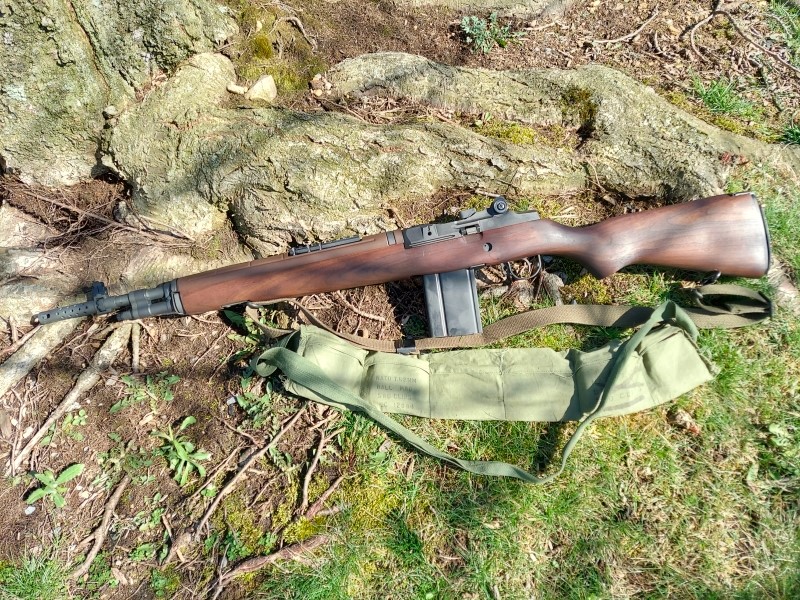
The rifle can be had with either a walnut stock (they are gorgeous) or a synthetic stock, which is a bit lighter in weight. Speaking of weight, this rifle weighs a hefty nine pounds and comes chambered in .308 Winchester (7.62 NATO). The barrel length is 18 inches, and the overall length is 37 inches, so it’s not a very long rifle, but it maneuvers well in tight spaces.
Premium Features
The trigger is a two-stage National Match trigger that certainly contributes to the accuracy of this rifle (mine is extremely accurate). Also, the sights are among the best of any rifle on earth; the rear is an aperture, and the front is a post protected by ears. Adjustments to the rear sight are very easy and positive.
Due to the short barrel and the .308 caliber, along with the muzzle brake, these rifles are loud! Overall, though, they are outstanding rifles, and if this is all you’d be “limited” to, you’d have yourself one fine weapon!
SKS Carbine
The Soviet-designed SKS carbine was ultra-popular back in the 1990s when they could be bought for around $100, and the ammo was about a dime per round. Designed in 1945, the SKS has been around for quite a while, and it’s still useful.
It’s chambered for the Russian 7.62x39mm intermediate round, which loosely resembles the performance of the American .30-30 Winchester. This round is hard-hitting at close range and can get the job done, usually weighing in at 123 grains, give or take a few, depending on the ammo being used.

Although synthetic stocks and extended magazines are available as add-ons, the basic rifles come with a wood stock and fixed 10-round magazine. The magazine is fed either by single rounds or via stripper clips. If good stripper clips are used, feeding can be accomplished quickly. There’s no pistol grip or flash suppressor, so the SKS flies under most anti-gun radar.
Most SKS carbines weigh around 8.5 pounds and have an overall length of around 40 inches. Shorter models are available. The standard barrel length is 20 inches.
While the SKS isn’t state-of-the-art, “tacticool” perfection, it can get the job done. Just don’t expect it to be accurate much past 100 yards. But for self-defense purposes, this rifle will give you all that you need. Additionally, they are incredibly reliable and robust, too.
The Lever-Action
There are various lever-action rifles on the market, and many of these make a lot of sense for self-defense. It turns out that many homes already have them since they have been popular for hunting over the generations of the past two centuries.
Some of the favorite calibers in modern times are the venerable .30-30 Winchester, which is usually available in bullet weights from 150 to 170 grains. The .357 Magnum and .44 Magnum are two other well-liked calibers. All of these rounds are effective at stopping both two-legged and four-legged predators, and none of them offer prohibitive recoil. .30-30 is widely available in gun stores and wherever ammunition is sold, and the Magnum calibers are also normally very available, with .357 being more prevalent in my region.
Plenty of Options
Winchester, Ruger/Marlin (Ruger has now taken over Marlin), and Henry are three good companies to choose from for your lever action needs. All offer solid rifles. Prices these days, however, are far higher than they used to be in the not-too-distant past, as people have realized the value of a good lever action rifle.
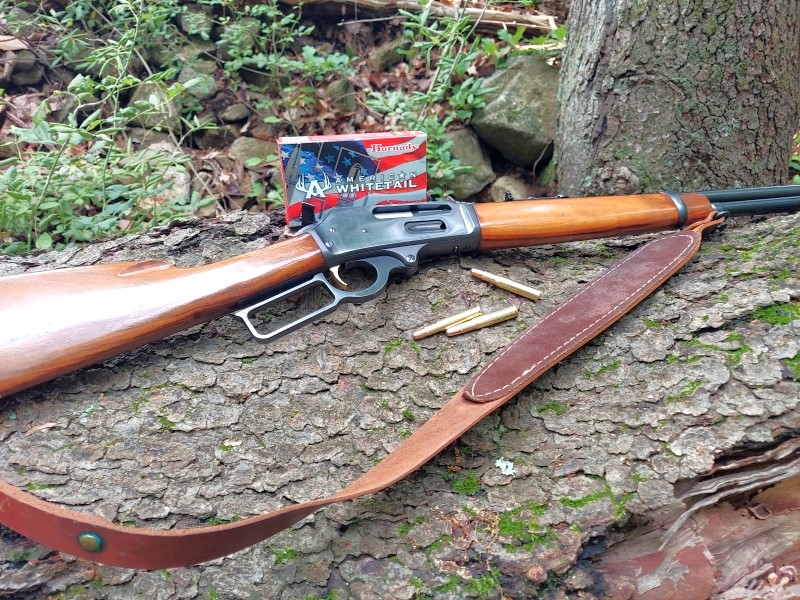
Typically perceived as a “Cowboy Gun,” people don’t tend to get overly excited when they see a lever gun. That old-school perception and the wood stock go a long way here. They’re certainly not as inflammatory as the evil black rifles, causing less of a stir. And sometimes, being under the radar is the best way to go.
Most of the .30-30s hold about six rounds, which isn’t a whole lot of firepower. However, the tube magazine that’s located underneath the barrel can be topped up as we go along, so that’s a plus. There are no detachable magazines to contend with, which can be a sort of advantage. The rate of fire with a well-practiced shooter can be brisk with this old design, which lends itself well to self-defense. In fact, lever action classes have become more popular around the country as people realize the benefits. If you go the .357/.44 route, the magazines hold more rounds.
Shotguns
At present, plain Jane shotguns do not seem to be on the anti-gunners’ radar. I don’t mean the type that has a collapsible stock and pistol grip and holds eight rounds (those are really fun, though). I’m talking about shotguns with standard stocks (often wood).
Note that we’re not necessarily talking about Elmer Fudd’s duck gun here, with the 27-inch barrel. In many cases, a combat shotgun with wood or synthetic stock will be legal. Especially the pump action, which seems to be off the establishment’s radar. Semi-autos are a little higher profile and might have magazine limits. But if you stick with a standard stock, that seems to get around many of the ban state laws while still remaining extremely effective.
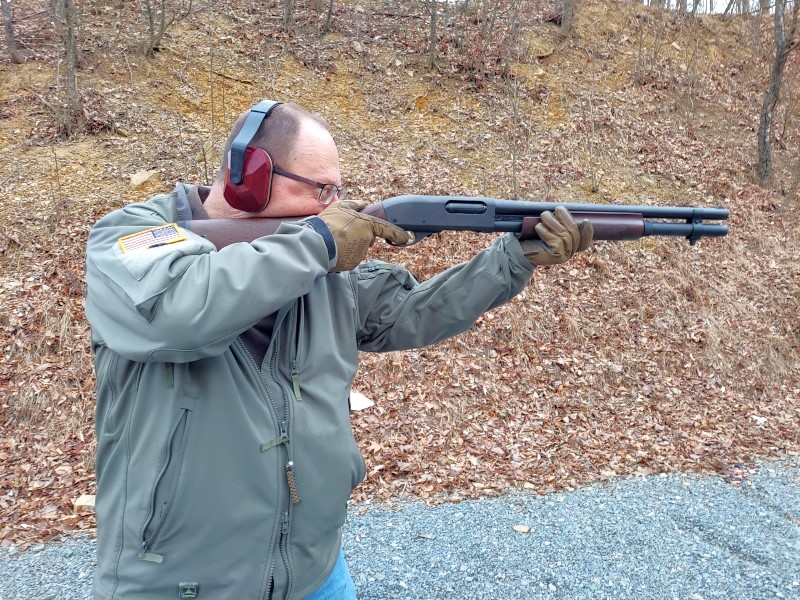
12 gauge has the advantage of power and is available wherever ammunition is sold. However, it does have a ton of recoil, which turns many people off. Some prefer 20 gauge, though it’s not as available as 12 gauge.
The shotgun is nicely suited for defending at close range (inside the home and maybe the yard).
Remington, Mossberg, and Winchester seem to be the best ones out there, in my opinion. I’ve used guns from each, and all have been reliable. And a good shotgun won’t set you back in the checkbook as much as most semi-auto rifles will.
Final Thoughts
There are other possibilities out there, for certain, as we’ve only covered a few here. Hopefully, though, this will help to get some people started in their search.
A state-of-the-art, high-tech rifle is not needed to defend hearth and home; sometimes, we’ve got to go with what we’ve got at the time. That might be a bolt-action hunting rifle or a single-shot shotgun. There’s good, better, and best. Our intention should be to get to the best option at some point if we are able.
If all you have is a Ruger 10/22, then set it up so that it will work for you (yes, it is possible). Stock up on ammunition for whatever firearms you have at your disposal. Buy magazines if that’s what it takes. Optimize whatever platform you’re working with.
If I were restricted to any of the choices above, I could make it work. They’re not necessarily all my first choice, but sometimes we can’t have that. I will say, though, that the Mini-14 is an extremely capable rifle, and I’d not feel under-gunned with it if I had to use it. In fact, it would be my first choice on this list because it’s light, and the 5.56mm round that it fires is also light.
Whatever you do, though, make sure you have something around to defend you and your family and that you get some training in the event that Trouble comes knocking on your door. Because it appears that Trouble is wandering around at the moment, and it wants to live up to its name.
The post Ban State Friendly: Low Key Defensive Firearms appeared first on The Mag Life.
Read the full article here

